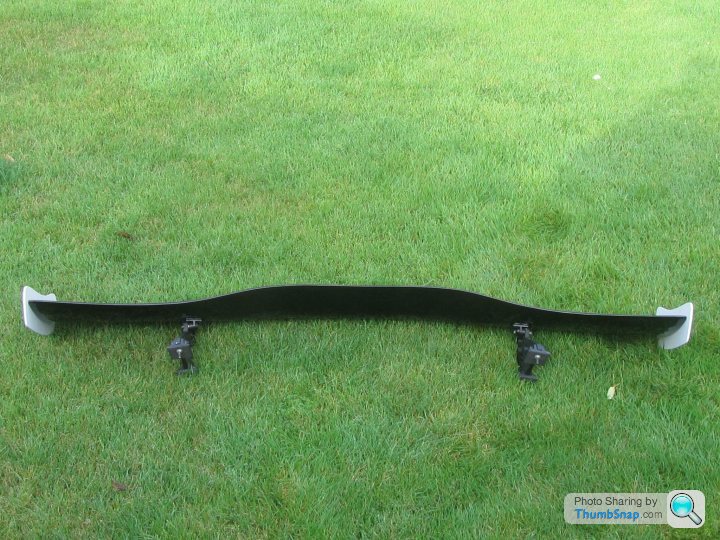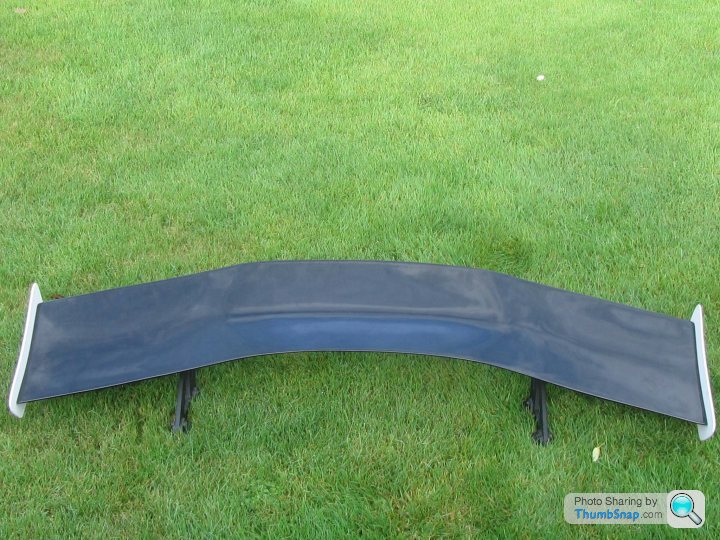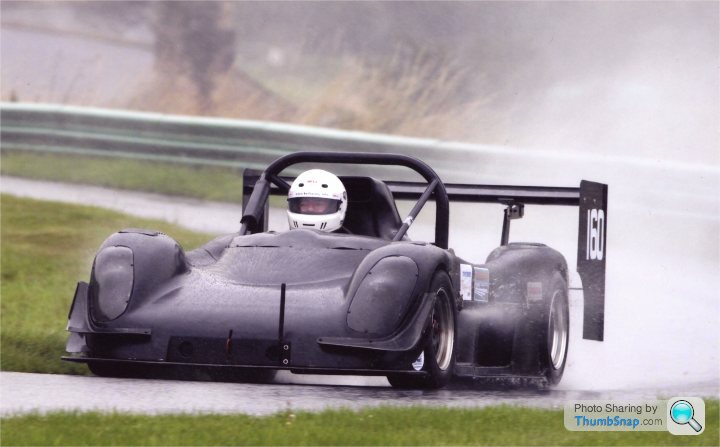My new style Carbon Wing
Discussion
Dropped in it again by Trev!
I've always been one to encourage (and indulge in) an inquisitive approach, innovation and experimentation. So I'd like to hear further from you Babak about what you expect the interaction with the louvres to be and the results of your experiment.
Andy has it right about the normal reason for compound wings - it's to adapt the wing to the air that it encounters and thus to spread the loads generated across the span as equally as possible. Now, it's probably me but I like to think of it as raising the centre rather than dropping the ends. As a clear example of a compound wing here's my rear wing for a race Cayman which is bent in two planes to adapt it to the freestream air at the sides of the car as well as the attached flow coming down the rear hatch.


I'm guessing here, but I suspect the idea of the wing/louvre positioning is to address the popular view that there is high pressure inside the wheel arches of a sports racing car. The attitude of the regulatory authorities to this phenomenon is interesting - LMP cars now have to a large open area above the wheels, whereas for years Clubmans cars have had louvres, slots, holes and other body discontinuities above the wheels proscribed. This is not an area on which I've done much work, but fundamental physics (consider entrainment and Bernoulli) would lead me to expect low pressure in an enclosed wheel arch. My hands-on experience has been one of being blasted by grit, gravel and picked up water from the louvres in a Caterham cycle wing but not suffering the same with a Radical. Perhaps other Radical drivers could let us know their experience.
Here's Black Betty cruising slowly through Quarry at Harewood on a fine Yorshire day. It shows brilliantly most airflows over the car but I can't detect any signs of high pressure air exiting the louvres - what do you think?

Now, consider the case were high pressure air to exit a louvre under a wing. Would this increase or decrease the pressure under the wing, would it add to or reduce the relative air velocity under the wing? Difficult to work out? Would it be more conservative to position the pressure equalisation holes on the rear surface of the car?
I've always been one to encourage (and indulge in) an inquisitive approach, innovation and experimentation. So I'd like to hear further from you Babak about what you expect the interaction with the louvres to be and the results of your experiment.
Andy has it right about the normal reason for compound wings - it's to adapt the wing to the air that it encounters and thus to spread the loads generated across the span as equally as possible. Now, it's probably me but I like to think of it as raising the centre rather than dropping the ends. As a clear example of a compound wing here's my rear wing for a race Cayman which is bent in two planes to adapt it to the freestream air at the sides of the car as well as the attached flow coming down the rear hatch.


I'm guessing here, but I suspect the idea of the wing/louvre positioning is to address the popular view that there is high pressure inside the wheel arches of a sports racing car. The attitude of the regulatory authorities to this phenomenon is interesting - LMP cars now have to a large open area above the wheels, whereas for years Clubmans cars have had louvres, slots, holes and other body discontinuities above the wheels proscribed. This is not an area on which I've done much work, but fundamental physics (consider entrainment and Bernoulli) would lead me to expect low pressure in an enclosed wheel arch. My hands-on experience has been one of being blasted by grit, gravel and picked up water from the louvres in a Caterham cycle wing but not suffering the same with a Radical. Perhaps other Radical drivers could let us know their experience.
Here's Black Betty cruising slowly through Quarry at Harewood on a fine Yorshire day. It shows brilliantly most airflows over the car but I can't detect any signs of high pressure air exiting the louvres - what do you think?

Now, consider the case were high pressure air to exit a louvre under a wing. Would this increase or decrease the pressure under the wing, would it add to or reduce the relative air velocity under the wing? Difficult to work out? Would it be more conservative to position the pressure equalisation holes on the rear surface of the car?
LCM said:
My hands-on experience has been one of being blasted by grit, gravel and picked up water from the louvres in a Caterham cycle wing but not suffering the same with a Radical. Perhaps other Radical drivers could let us know their experience.
Actually, I have experienced water being flung through the arches. Here's the arches:
Here's the video, although you can't really see the water being flung up. The top of the clam was very dirty when I returned to the paddock. However, that's not proof of high pressure. The water is flung tangentially from the tyre, having been picked up from the ground. You only need to watch single seaters in the wet to see this. This is different to how air builds up in the wheel arches. Of course, it's not high pressure everywhere in the arches and some places will be low pressure.
Are the cars you've driven either much wider cars than a Caterham or with a central driving position? Is proximity to the wheels the reason you've not experienced a wet visor? It's also worth noting that your cars have great under-body extraction from the wheel arch, which reduces the need for the vents to do their job.
On the subject of LMP cars, the regulation is there for cars in extreme yaw. Opening the top of the arch, reduces lift when the car spins and means we have less chance of those big accidents we've seen where cars take off.
Gassing Station | Radical | Top of Page | What's New | My Stuff


